Zamenis longissimus
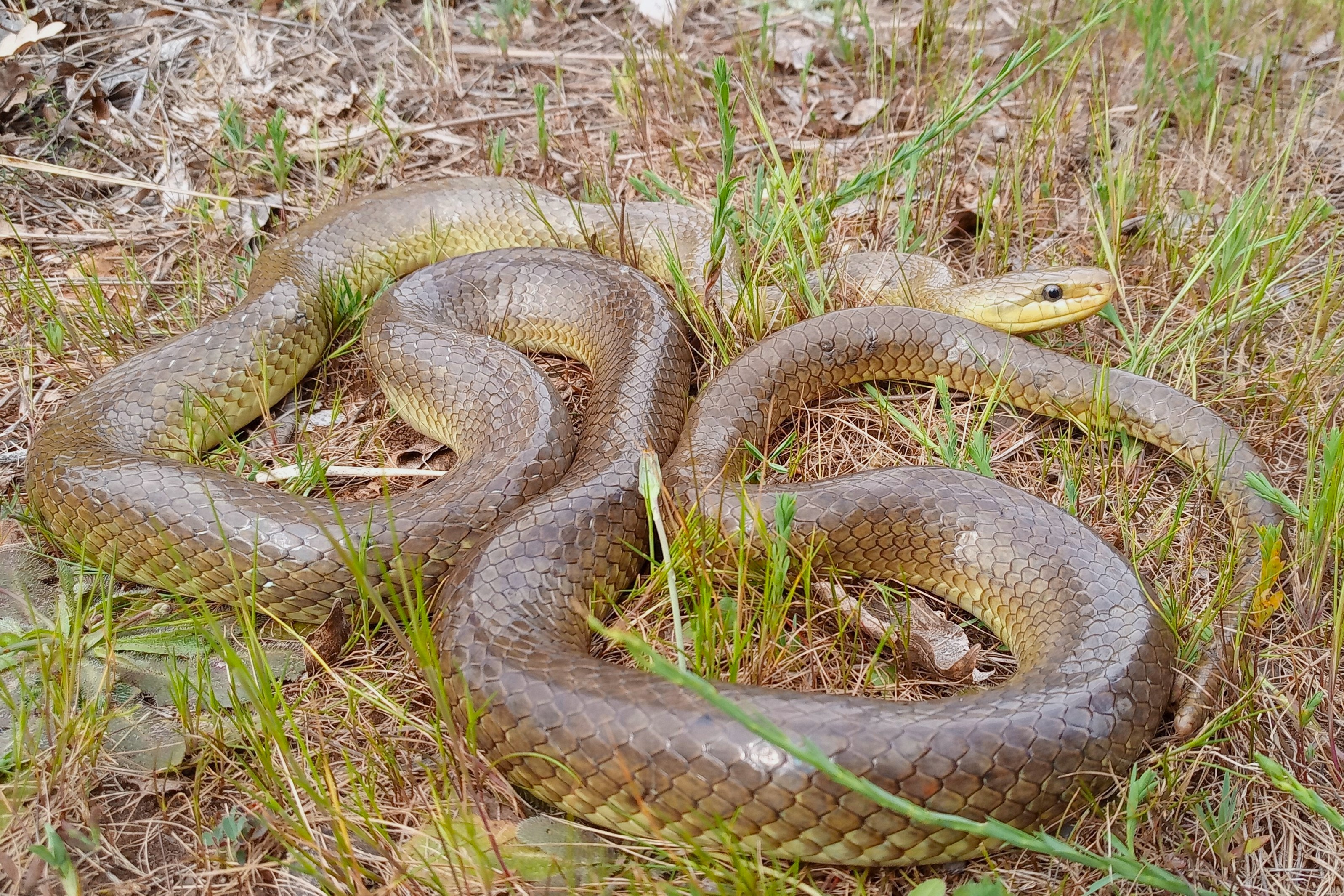

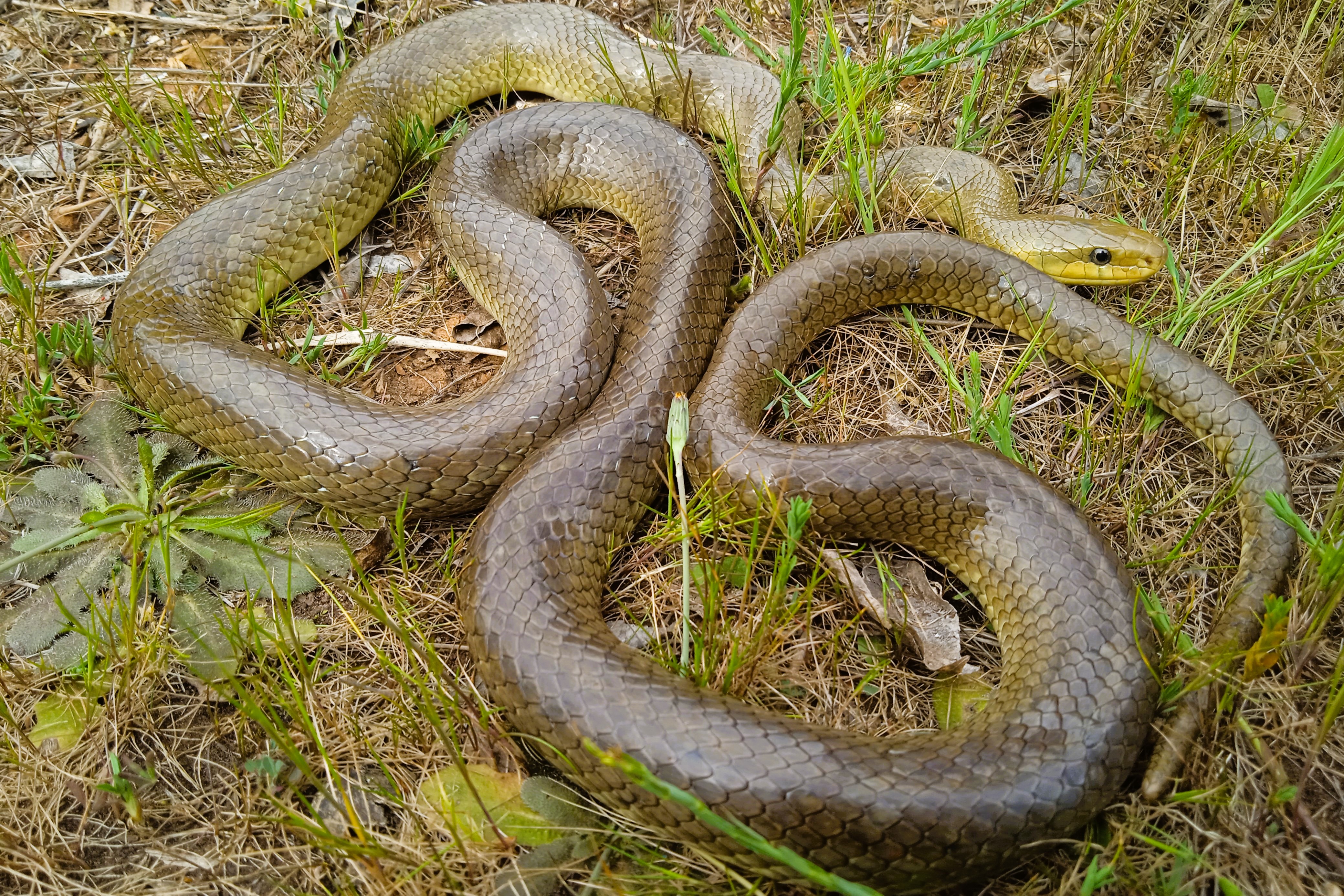
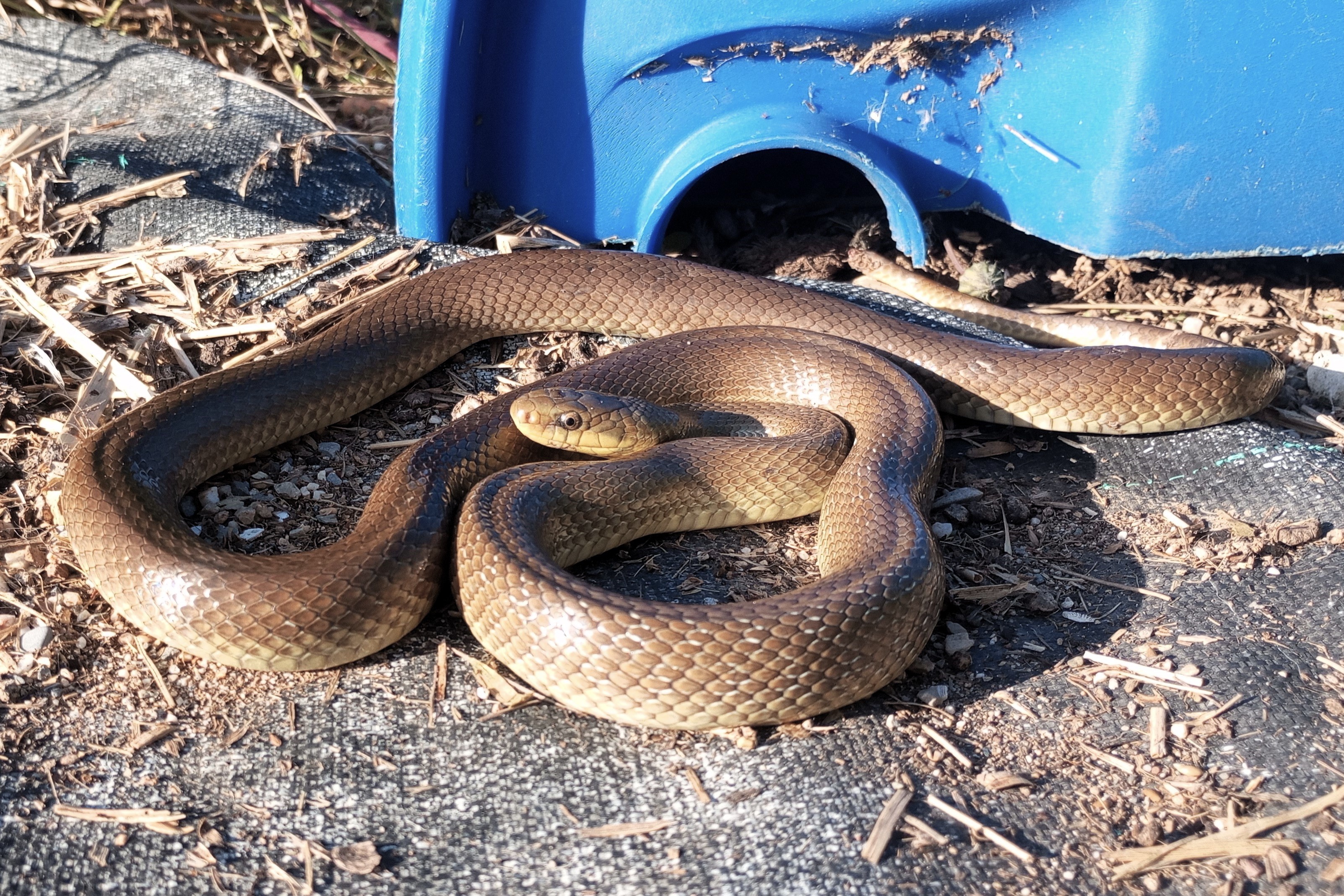
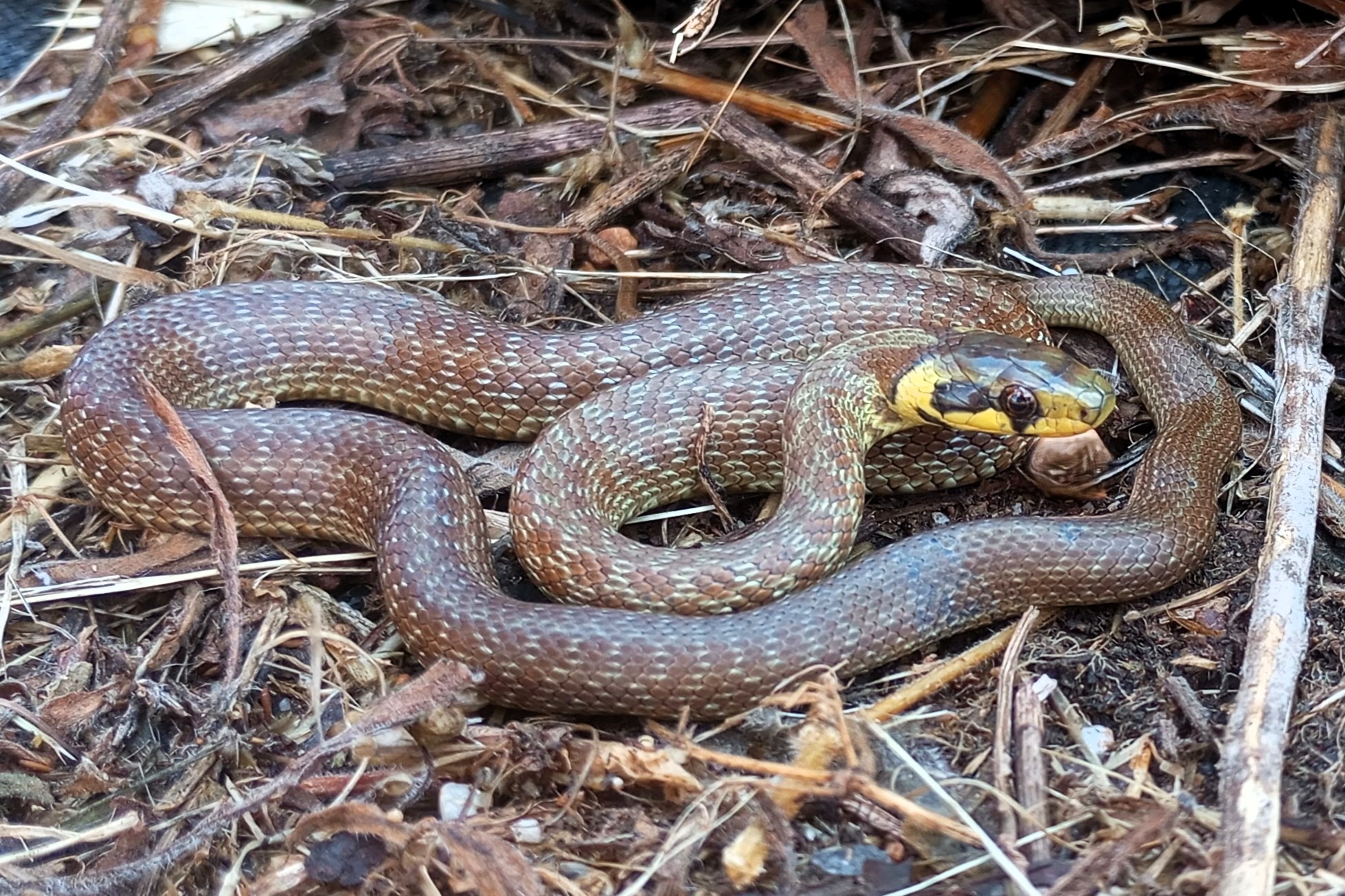
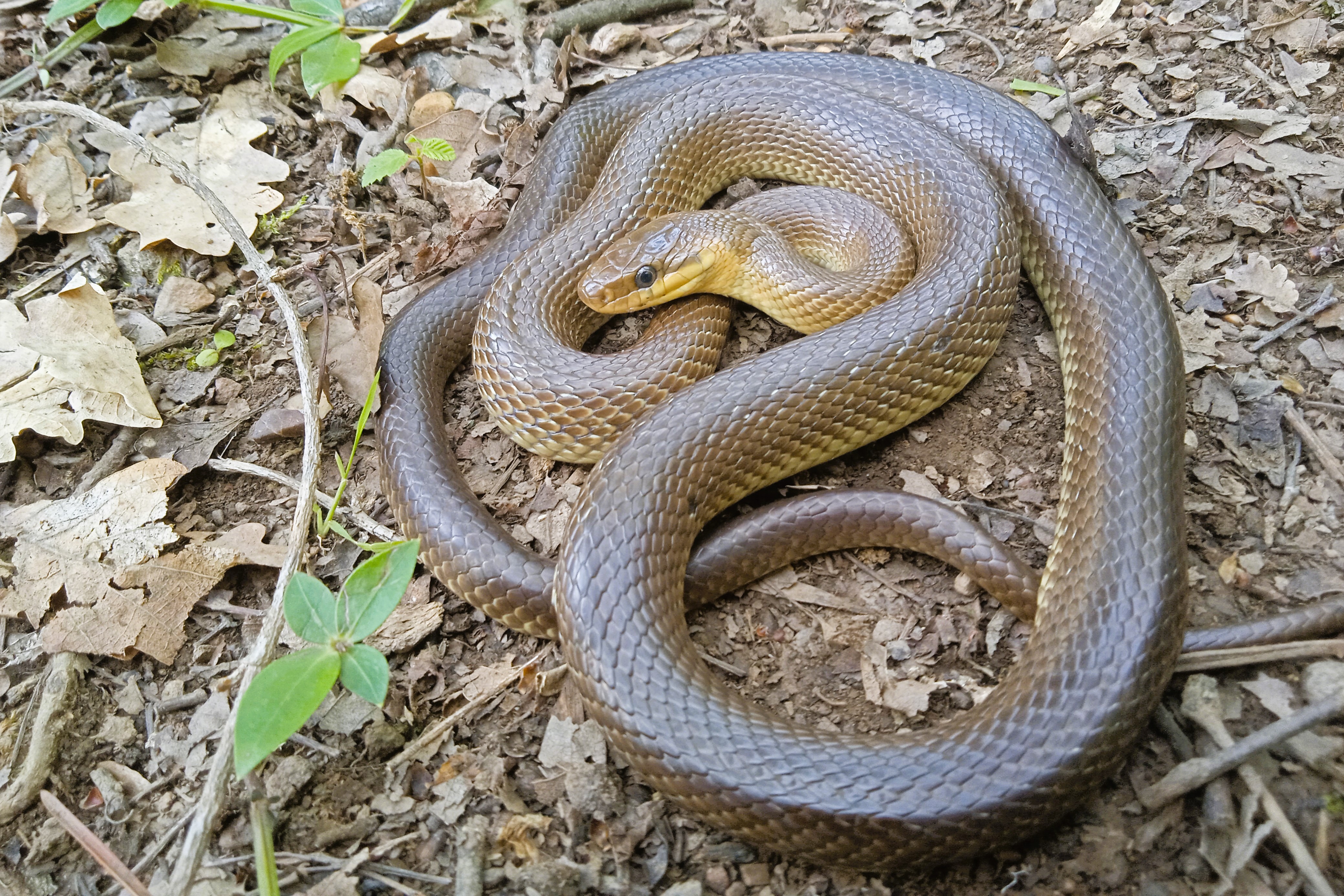
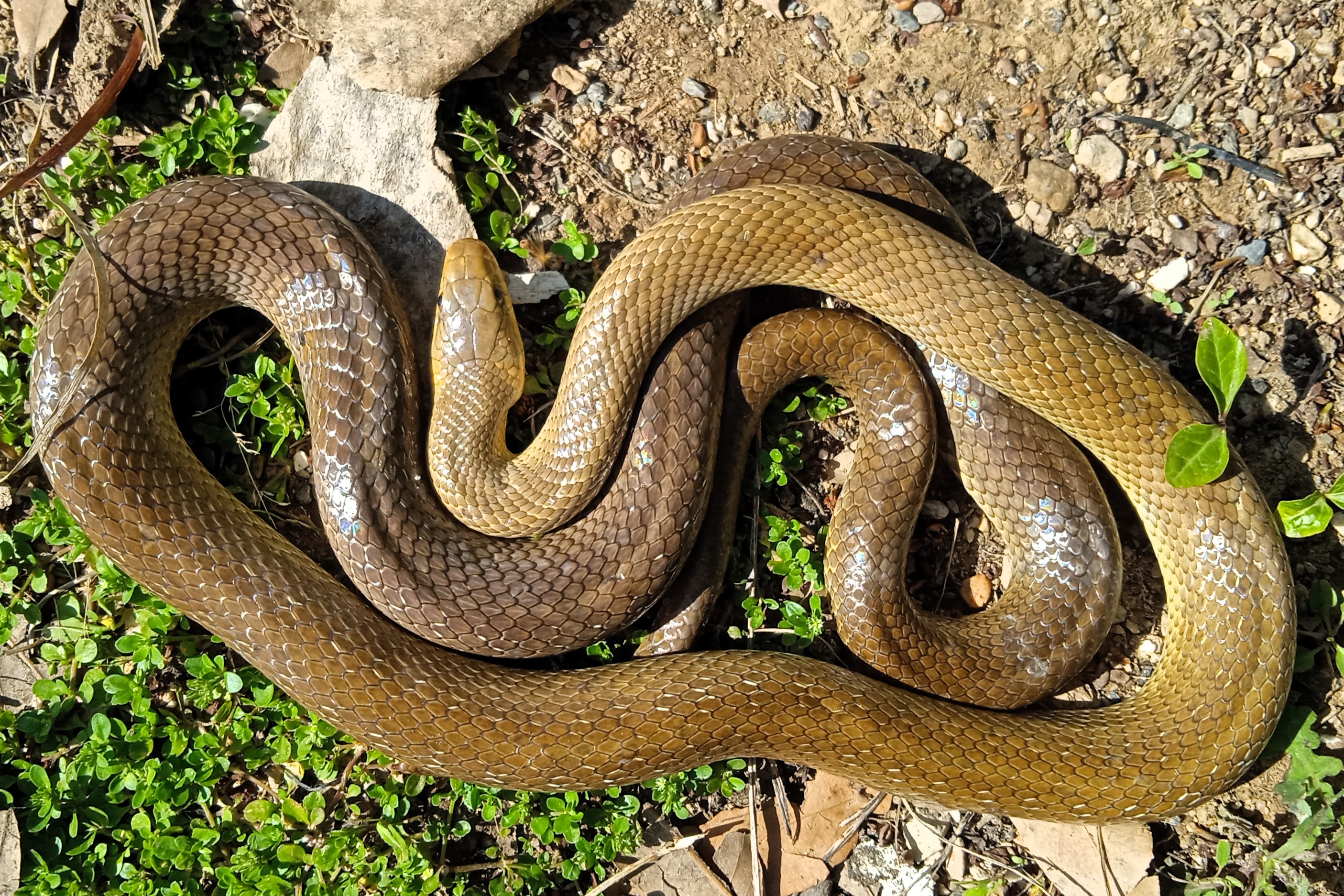

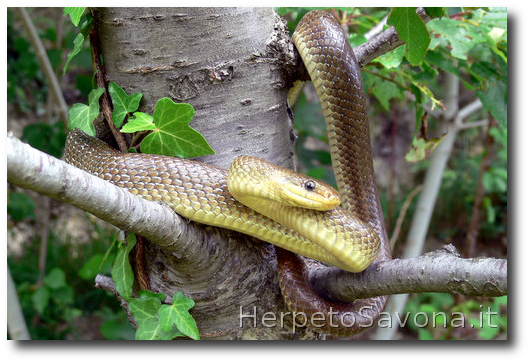

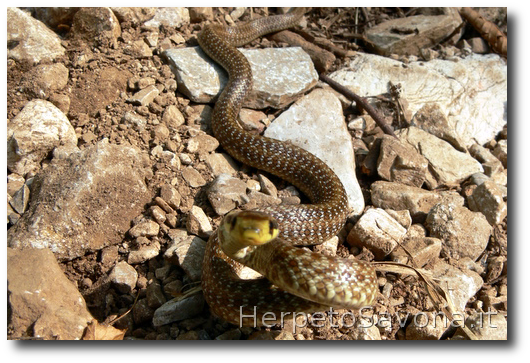
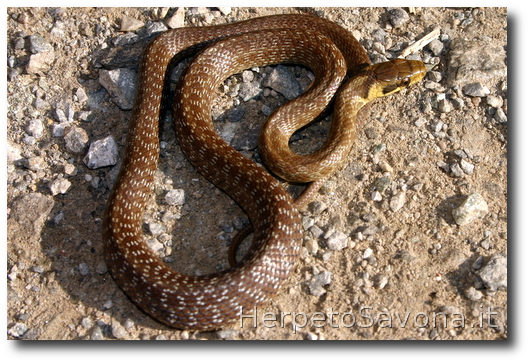
Reptilia → Squamata → Serpentes → Colubridae → Zamenis → Zamenis longissimus
Bissa oxelea, Oxelaia, Biscia oxelea, Saetùn
The Aesculapian Snake ( Zamenis longissimus ), also known as Saettone, is among the longest European snakes, commonly reaching 59–71 in (150–180 cm), with some individuals exceeding 6.6 ft (2 meters). Its body is slender yet robust, especially at mid-trunk, appearing extremely sinuous in movement. Adult coloration is a brownish-green background crossed by small whitish spots on the scales, while the belly is uniformly yellowish-green. The head, relatively small and not well-distinguished from the body, is paler and sometimes yellowish. The eyes are proportionate and have a round pupil, with an iris color ranging from grayish to brown or pale yellow. Juveniles are distinguished by a brown livery dotted with large dark spots and a characteristic yellowish collar at the base of the head, which can cause confusion with the Grass Snake ( Natrix helvetica ). Sexual dimorphism is moderate: females, usually larger and more robust than males, show no other obvious differences.
Zamenis longissimus ranges from northern Spain (Pyrenean area) through southern and central France, the Italian Peninsula, some areas of central Europe, the Balkans, and Asia Minor to Lebanon. In the province of Savona and western Liguria, the species is considered relatively common, found in both natural and human-modified environments up to 3,300 ft (1000 m) above sea level. Its adaptability allows it to frequent even urban areas, road edges, and gardens, where it can sometimes be observed during the mildest periods of the year.
The Aesculapian Snake prefers environments with abundant vegetation cover and structures providing shelter, such as open thermophilic woods, hedges, dry stone walls, riverbanks, rural zones, and abandoned waste grounds. It often finds refuge under haystacks, large stones, tarpaulins, or abandoned materials. Its presence in both Mediterranean and continental habitats demonstrates notable ecological versatility.
A semi-arboreal species and skilled climber, Saettone starts its activity in early March, which can last in mild years until mid-November. It is not particularly thermophilic: it avoids excessively hot summer hours, preferring twilight or even nocturnal activity on scorching days. When it gets very hot, it seeks out humid areas or stagnant water, where it may remain partially submerged with only its head at water level. Reproduction takes place in spring: females, after mating with one or more males—sometimes forming complex tangles of snakes—lay between 4 and 12 eggs in protected cavities under roots, walls, or stones. The young, measuring 10–11 in (25–28 cm) at birth, emerge between late August and early September.
Zamenis longissimus displays a varied and opportunistic diet. Adults prey on small mammals up to the size of a rat, young rabbits, lizards, other reptiles, and sometimes amphibians. Thanks to its remarkable climbing skills, it raids bird nests, feeding on eggs, chicks, and occasionally modest-sized adults such as the Blackbird (Turdus merula). Juveniles' diet focuses on lizards and small rodents. Prey are killed by constriction, a technique refined in the genera Zamenis and Elaphe, which are the major constrictors among European snakes.
The Saettone falls prey to diurnal birds of prey (especially the Short-toed Snake Eagle, Circaetus gallicus), carnivorous mammals, and large snake-eating serpents such as the Whip Snake ( Hierophis viridiflavus ) and the Montpellier Snake ( Malpolon monspessulanus ). However, human threats remain the most significant: direct persecution, habitat destruction, and road mortality have a considerable impact on local populations.
Despite the name 'Saettone' that might suggest a particularly fast animal, the Aesculapian Snake is generally cautious and composed, standing out for the elegance of its movements rather than speed. It can bite if threatened but, unlike other colubrids, tends to release its grip quickly. In ancient times, it was considered sacred by Mediterranean peoples and depicted on the staff of the Greek god of medicine, Asklepios (Aesculapius for the Romans), now a universal symbol of medicine. Besides its imposing size, Saettone is one of the most famous ophidians of the European continent for its historical, mythological, and archaeological role.